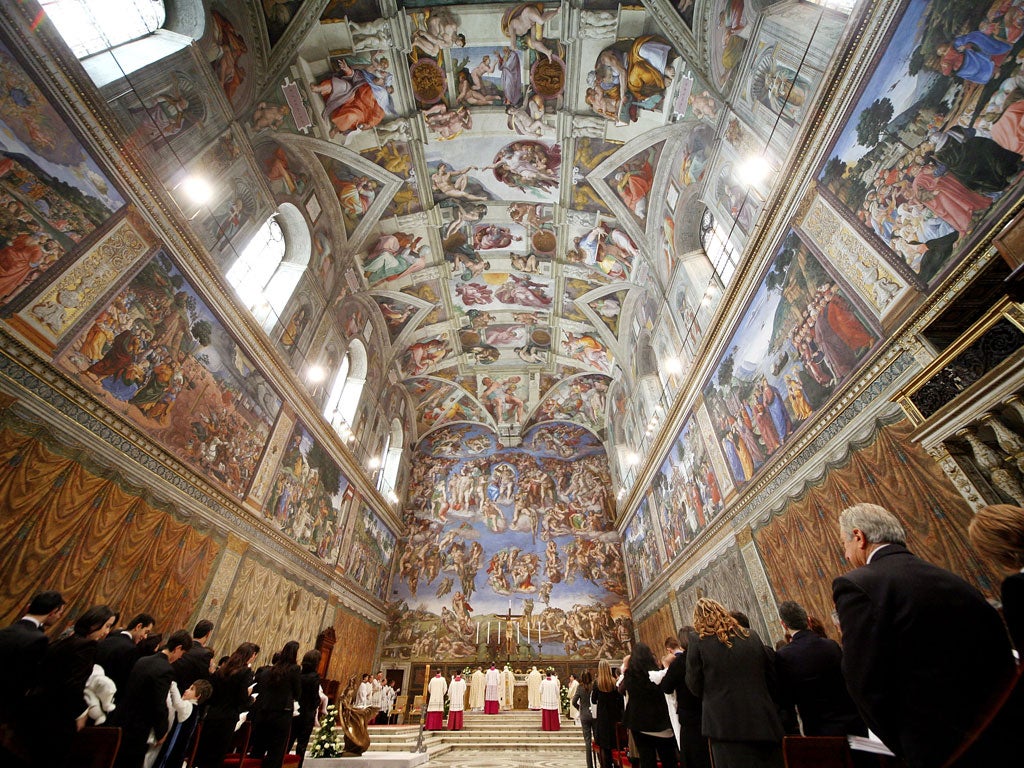Whether it's The Master or The Hobbit, pity those purists who care more about format than film
How a screening of The Master turned into a purist's parade; a stress-free way to view the Sistine and why swearing is big and clever

I witnessed an interesting moment of theatre the other day. It wasn't actually in a theatre, but in the Odeon West End and it occurred shortly after the beginning of a press screening for Paul Thomas Anderson's film The Master. It soon became clear that there was a problem with the projection. First, there was no sound and then when it arrived it was a few frames behind the image and showing no sign of catching up. The screening was well attended and, as you might expect there were a few tuts of disapproval and muttered oaths. And then it carried on, the occasional critic stomping up the aisle to complain but the vast majority of the people there just sitting quietly and waiting for corrective action to be taken. Finally, the screen went dark and a figure walked to the front of the cinema to explain that it was going to be impossible to correct the 70mm version in time and we would have to make do with a digital projection. At which point quite a few people uttered loud groans of disapproval.
What was being dramatised here was a sensibility. Or, more to the point, the possession of a sensibility refined enough to find this an affront to one's connoisseurship. What was a relief for me and, I suspect, quite a few other people present, was an aesthetic disappointment for some. To be fair, there was licence for their dismay. Paul Thomas Anderson wants his film to be seen in 70mm and had gone to considerable lengths to make it in that format. And there are only a limited number of cinemas where it can be viewed as its creator intended. But as the film restarted and we saw the same opening images unfold – lustrous, pin-sharp and steady as a rock – it was very difficult to feel that there'd been a regrettable alteration of quality. This is, one takes it, a digitisation of the 70mm original, so we weren't looking at a cropped or substantially altered image.
Which doesn't mean that there won't be people who insist that they're chalk and cheese. Just as with vinyl versus digital music formats and with the rumbling unhappinesses that surrounds Ultra High Definition Video (which Peter Jackson is using to film The Hobbit) the narcissism of small differences ensures that there will always be those fixated on formats and the theological distinctions between them. And what often accompanies those discussions is a religious degree of insistence. If you haven't seen film X in 70mm or heard album Y on vinyl, the purists will insist, then you haven't really seen or heard them at all. Some will go further and suggest there's hardly any point in seeing or hearing it in any other format at all, such is the perversion of the artist's intention.
The ceiling ceiling has been reached
If you were to hold a competition for the greatest gap between the magnificence of an artwork and the wretchedness of the experience of looking at it, the Sistine Chapel (above) would surely be the runaway winner. Twenty thousand people a day want to add it to a touristic tick-list – fed in at one end, expelled at the other and digestively churned in between. So the proposal that visitor numbers will be limited should be greeted with hosannas. The Vatican should whack up the price, run a lottery for those on a budget, and let Google add every fresco to its wonderful Art Project. In the meantime vatican.va lets you in solo.
Comedy genius to swear by
I don't know whether anyone still maintains that obscenities are a symptom of a poor vocabulary, but if you should encounter this prim untruth I can suggest an antidote, Roddy Doyle's latest volume, Two Pints, a collection of conversations between two men in an Irish pub. It deploys obscenity with nothing short of comic genius. It's tricky to prove this by quotation because the effect of the swear-words Doyle uses depends on the large chunks of un-obscene talk. They're usually an acknowledgement that more language would only compound the affront suffered. It's often very funny indeed – and makes the case very well that people who never swear should be pitied as suffering from a serious poverty of punctuation.
Join our commenting forum
Join thought-provoking conversations, follow other Independent readers and see their replies
Comments